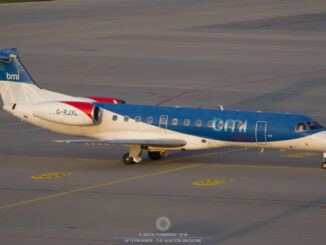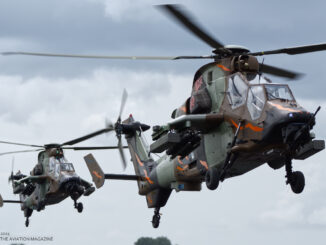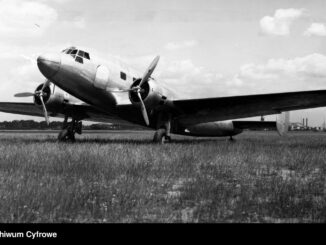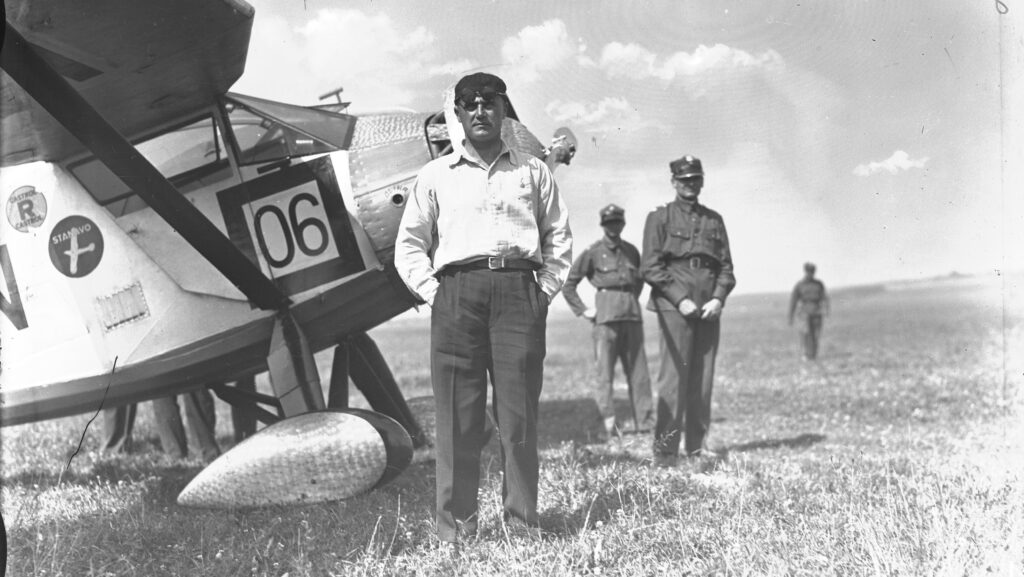 After two successful editions, Challenge International de Tourisme (English: International Tourist Aeroplane Competition) developed into the most prestigious aviation contest in Europe. Its initial idea was to compete with serial manufactured aeroplanes of so-called tourist class – and that was exactly reflected in the name of the competition. Nevertheless, a desire to win was so strong that, starting from the third edition, most of participating countries had developed completely new aircraft, purposedly for the Challenge series.
After two successful editions, Challenge International de Tourisme (English: International Tourist Aeroplane Competition) developed into the most prestigious aviation contest in Europe. Its initial idea was to compete with serial manufactured aeroplanes of so-called tourist class – and that was exactly reflected in the name of the competition. Nevertheless, a desire to win was so strong that, starting from the third edition, most of participating countries had developed completely new aircraft, purposedly for the Challenge series.
The third edition of the contest was again organized in Berlin and took place between 12th and 28th August 1932. For the second time in history of the competition, Germany was the hosting country, due to Fritz Morzik´s success in the previous edition.
Almost seventy aircraft and their crews signed up for the competition, however only forty three of them eventually appeared in Berlin. It was caused by growing requirements for aeroplane performance and skill of the crews. After two contests, the bar was set so high that many new developments were delayed, or their crews did not complete the training. Sometimes the race for creating a winning aircraft for the Challenge ended even with an aviation incident. One of such examples was Messerschmitt BFW M.29 that was among candidates to win the gold medal. However, shortly before opening of the competition two M.29 crashed and finally the type was withdrawn from the Challenge.
National teams from six countries participated in the 1932 contest, including Germany, France, Italy, Poland, Czechoslovakia and Switzerland. The domestic team was the strongest one, with sixteen crews, while the Swiss one was the smallest, having just two participating crews.
Winifred Spooner, already known from the previous editions of the Challenge, was this time the member of Italian team and the only aviatrix in Berlin. John Carberry, the Canadian pilot known for his quite successful appearances in two previous competitions, was now flying for Germany – just like the only Romanian pilot of the 1932 edition, Alexandru Papană.
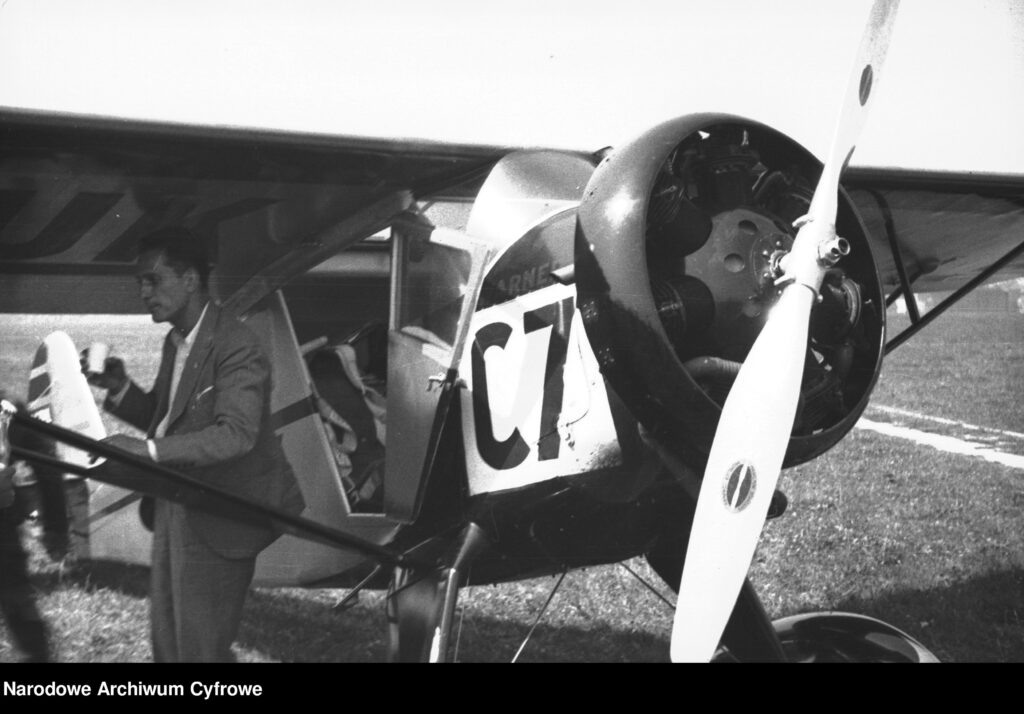
Finally, Germany participated with Klemm Kl 32 and Heinkel He 64 aeroplanes – both being a low-wing monoplanes with enclosed canopy and fixed landing gear. The latter was developed especially for the purpose of that competition, with only six examples built (plus one prototype). All of them entered the Challenge and, as they were exceptionally good at high-speed trials, the He 64 was expected to win the contest for Germany.
Italy, Czechoslovakia and Poland also entered the competition with new designs, developed for the Challenge. The Italian ace in the hole was Breda Ba.33, low-wing monoplane that already won Giro aereo d’Italia (Air Tour of Italy), an aviation race organized in 1931. Czechoslovakia entered the competition with Praga BH-111, just another closed-canopy, low-wing monoplane. The aircraft was designed by Pavel Beneš and Miroslav Hajn, two aviation engineers already well known from their previous developments, such as BH-1 or BH-5.
Poland entered with two new designs, a high-wing monoplane designated RWD-6 and low-wing, all-metal aircraft known as PZL.19 or PZL XIX. Similarly to already mentioned competitors, the Polish aeroplanes featured enclosed canopy and fixed landing gear.
Other participating aeroplanes were only the already known, serial aircraft that just undergone some modifications or upgrades – Potez 43, Farman 234, Breda Ba.15S, Monocupe 110, Comte AC-12 or Mauboussin M.112. Nevertheless, all they were significantly less advanced then the aforementioned new designs, made especially for the Challenge, so their chances to win were small.
The 1932 edition of Challenge International de Tourisme began with evaluation of overall design and technical advantage of the participating aeroplanes. That part of the contest was still related to the initial idea of tourist aeroplane; thus, points were granted for comfortable cabin, good view from cockpit, quality and advance of instrument panel, seats in side-by-side configuration and, last but not least, folding wings for easy storage and transport. Not surprising, the first trial was won by those purposedly made aeroplanes: RWD-6, PZL.19, Ba.33 and BH-111.

Then there was a minimum speed trial, new competition within the Challenge series, added for the purpose to check the safety level of participating aircraft. This trial was decisively won by the two RWD-6 aeroplanes, followed by the three Ba.33 and the two He 64. What´s interesting, the organizers did not expect any of the participating aircraft would be able to break the minimum speed of 63 km/h, thus not having any scoring beyond that level.
However, two German crews flew at 62.4 and 62.1 km/h, respectively. Winifred Spooner achieved 61.5 km/h, two other Italian crews made it as slow as 61.4 and 61.2 km/h. Nevertheless, the two RWD-6 crews were the absolute winners – Tadeusz Karpiński achieved 60.8 km/h and Franciszek Żwirko pushed his aeroplane to the limits, flying at only 57.6 km/h. In the end, all seven crews that made it below 63 km/h were awarded with 50 points, the maximum score for the low-speed trial.
Short take-off and landing trial was won by German and Italian crews. However, it was not the He 64 that scored for Germany there, but the Kl 32. Two other technical trials included wing-folding competition and fuel consumption contest. During the latter, Winifred Spooner was forced to land due to some fuel issues. Shortly after it turned out that the real reason was sabotage and, as a consequence, she decided to withdraw from the Challenge.
After the technical part of the competition, the first place was taken by Ambrogio Colombo and his Ba.33 (247 points), followed by Franciszek Żwirko in the RWD-6 (245 points) and two other Italians, Francesco Lombardi and Renato Donati, also in the Ba.33. Staying in the competition, Winifred Spooner would be classified as fourth, ex aequo with Donati.
On 21st August the most challenging trial of the 1932 competition began. It was an aviation rally through Europe, a demanding journey of more than 7,300 kilometres over Germany, Poland, Czechoslovakia, Austria, Yugoslavia, Italy, Switzerland, Belgium, France, the Netherlands, Denmark and Sweden.
Shortly after its beginning, the rally turned over into a kind of separate challenge between German and Italian crews in their attempt to be the first in Rome, the capital city of Italy. Other crews, not having such fast aircraft as the He 64 and Ba.33 were, focused rather on reaching the final destination and average performance.
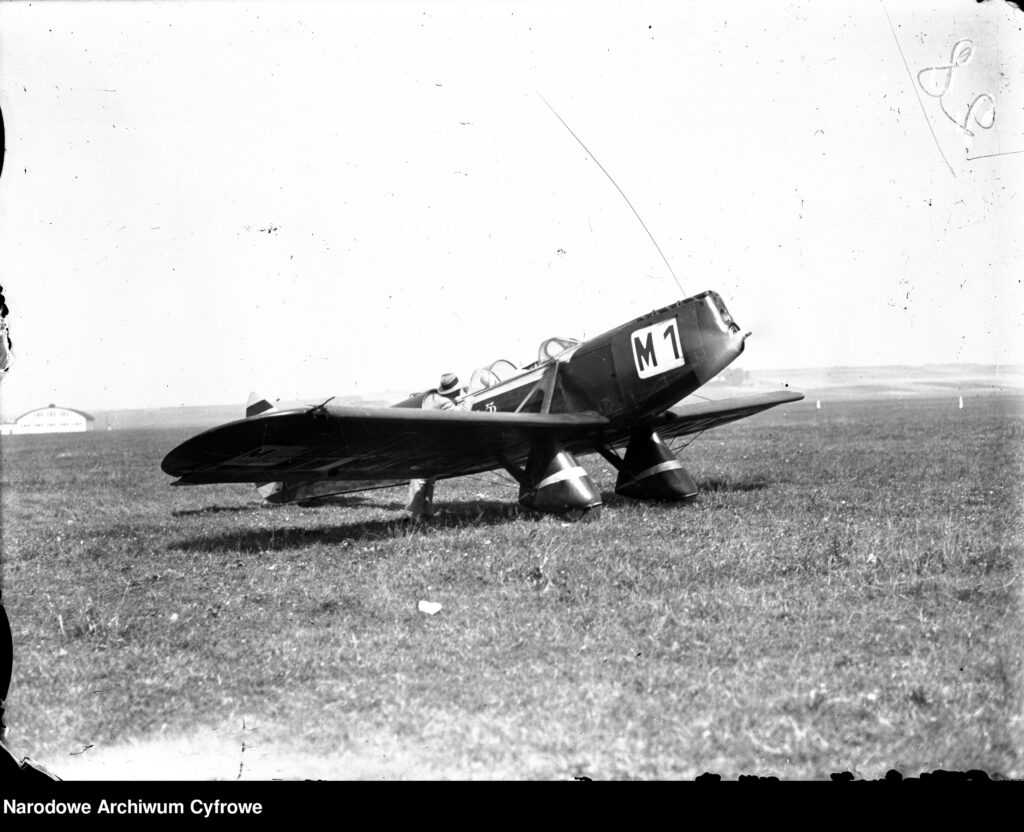
Rome was reached on 22nd August and Hans Seidemann from Germany was the first to land there. Only thirty three crews made it to the Italian capital and three aircraft crashed on their way there.
That crazy race to Rome was devastating for the Italian crews. On 23rd August, while departing Rome, two Ba.33 crashed with one fatal casualty. Weak wing construction, together with increased material fatigue caused by flying at the fastest limits, was the reason and caused all the remaining Italian teams decided to withdraw from the Challenge.
As a consequence, the rally was a decisive German victory. The German teams took places from first to ten, with only exception of Robert Fretz from Switzerland, who was placed eighth (ex aequo with Reinhold Poss). However, also Frezt was flying with the German-made aeroplane, the aforementioned Kl 32.
The first crews in non-German aeroplanes were Żwirko (RWD-6) and Josef Kalla (Czechoslovakia, BH-11), with their on-board mechanics. They took the eleventh place together, scoring 211 points and losing 9 points to Seidemann, who won the rally.
Nevertheless, with the withdrawal of the Italian crews, Żwirko became the leader of the overall classification, with 456 points. He was followed by Reinhold Poss – the silver-medal winner of the 1930 edition – who this time scored 451 points, flying the Kl 32; then Wolf Hirth with 450 points and Fretz with 448 points. Right behind them there was Fritz Morzik, two-time winner of the previous Challenge series, with 444 points.
It became clear that the last trial would be the crucial one. That was a maximum speed trial, flown on a 300-kilometre triangular route. And, once again, the German crews flying the He 64 were the favourites there.
With no surprise, the speed trial was won by Morzik, who reached the speed of 241.3 km/h. He was followed by four other German crews in the He 64. Żwirko took the thirteenth position, with 214.1 km/h. Poss and his Kl 32 were placed seventh, with 220.7 km/h.
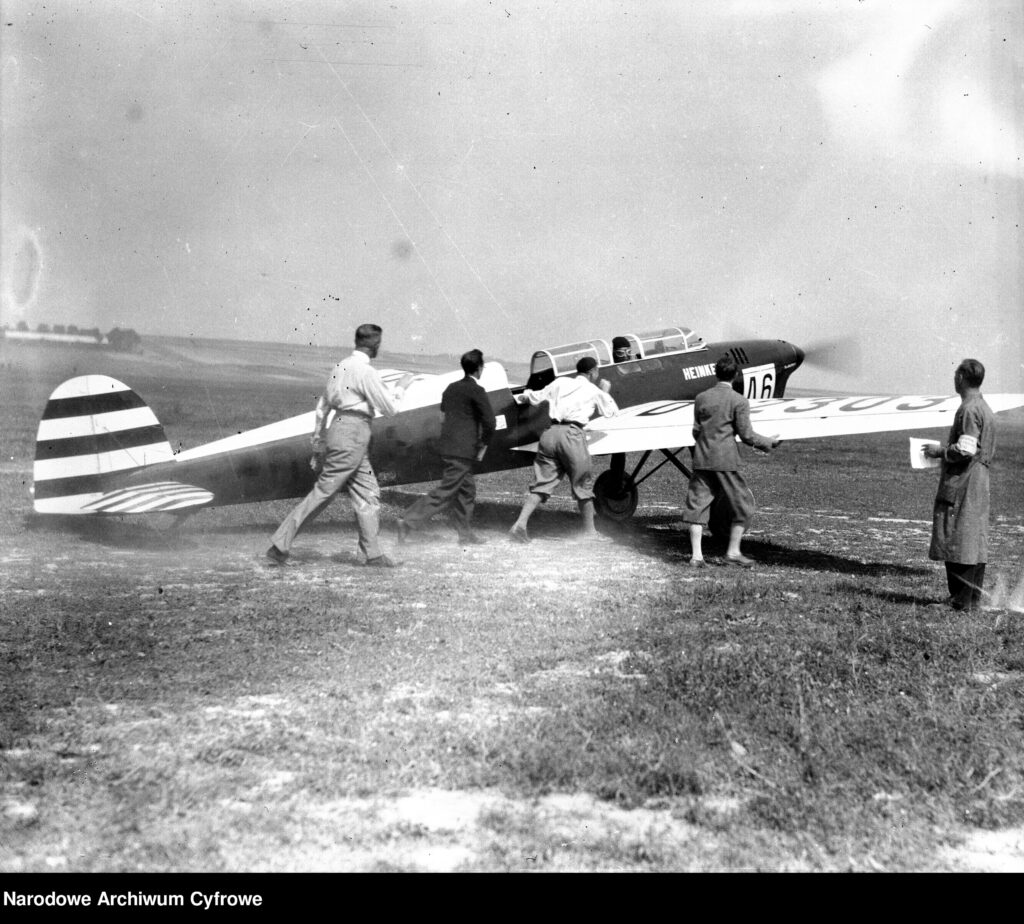
However, and what was the most important for the Polish pilot, not only the maximum speed counted during that trial. The overall score was based on a simple handicapping system, with crews taking-off with a particular interval, following the leader. The first pilot on the finish line would be announced the winner of that competition.
Żwirko was the first to take-off, followed by Poss five minutes later. Morzik, at that time placed at the fifth position, took-off another seven minutes after Poss. Having overrun Żwirko during the trial, Morzik would be the winner – however the Polish aviator managed to keep his leading position by landing as the first one, Morzik was one minute and twenty three seconds short. Poss landed 2 minutes and 30 seconds after Żwirko.
The final results of Challenge International de Tourisme 1932 were: Franciszek Żwirko with 461 points was the winner and the second place was taken ex aequo by Morzik and Poss, each scoring 458 points. Although the competition was dominated by the Germans – with twelve teams in the top twenty scores, the next Challenge was going to be held in Poland, because of Żwirko´s victory.
Among other, non-German teams in the top twenty there were Robert Fretz; three other Polish pilots Tadeusz Karpiński, Jerzy Bajan and Ignacy Giedgowd; Josef Kalla and Jan Anderle from Czechoslovakia, as well as Raymond Delmotte from France.
The next edition of the Challenge series was scheduled for 1934, to be held in Warsaw. Regrettably, some of the aforementioned pilots did not make it to the next contest. Franciszek Żwirko, together with his mechanic (and one of the RWD-6 designers) Stanisław Wigura, died in an aviation accident, two weeks after the 1932 Challenge competition. Reinhold Poss shared the same fate next year, hitting a church tower in Germany. Winifred Spooner died of pneumonia in January of 1933.

Cover photo: Franciszek Żwirko (middle) in front of his RWD-6, Challenge 1932 rally over Europe, stage point in Cracow, Poland. Photo: Narodowe Archiwum Cyfrowe 3/1/0/5/1240/75, public domain

